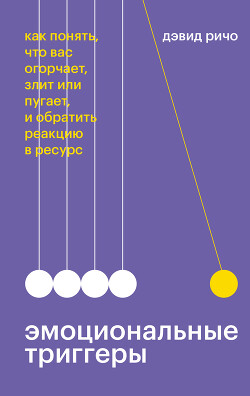Zeit: Kleine Psychologie des Zeitempfindens. C. H. Beck, 2012.
Brodsky A., Amabile T. M. The Downside of Downtime: The Prevalence and Work Pacing Consequences of Idle Time at Work // Journal of Applied Psychology, 2018.
INRIX 2019 Global Traffic Scorecard, 16.12.20 // inrix.com/scorecard/.
Eastwood J. D. et al. The Unengaged Mind: Defining Boredom in Terms of Attention // Perspectives on Psychological Science, 2012.
Elpidorou A. The Good of Boredom. Philosophical Psychology, 2018.
Van Tilburg W., Igou E. On Boredom. Lack of Challenge and Meaning as Distinct Boredom Experiences // Motivation and Emotion, 2012.
Gasper K., Middlewood B. L. Approaching Novel Thoughts: Understanding Why Elation and Boredom Promote Associative Thought More than Distress and Relaxation // Journal of Experimental Social Psychology, 2014; Park G. et al. Why Being Bored Might Not Be a Bad Thing after All // Academy of Management Discoveries, 2019; Mann C., Cadman R. Does Being Bored Make Us More Creative? // Creativity Research Journal, 2014.
Elpidorou A. The Bright Side of Boredom // Frontiers in Psychology, 2014.
Tsapelas I. et al. Marital Boredom Now Predicts Less Satisfaction 9 Years Later // Psychological Science, 2009.
Raffaelli Q. et al. The Knowns and Unknowns of Boredom: A Review of the Literature // Experimental Brain Research, 2018; Mak L. E. et al. The Default Mode Network in Healthy Individuals: A Systematic Review and Meta-analysis // Brain Connectivity, 2017.
Safranski R. Zeit. Was sie mit uns macht und was wir aus ihr machen. Carl Hanser Verlag, 2015.
Maul S. M. Walking Backwards Into the Future. The Conception of Time in the Ancient Near East // T. Miller, ed. Given World and Time. Temporalities in Context // Central European University Press, 2008.
Freedomways: A Quarterly Review of the Negro Freedom Movement // Esther Cooper Jackson. Freedomways Reader: Prophets in Their Own Country. S. 36.
Gandhi A. Wut ist ein Geschenk. Das Vermächtnis meines Großvaters Mahatma Gandhi. DuMont, 2017.
Уголовный кодекс. Специальная часть (§ 80–358), статья 16 «Преступления против жизни», § 213.
Barrett L. F. How Emotions Are Made: The Secret Life of the Brain. Houghton Mifflin Harcourt, 2017. Фельдман Барретт резюмирует, о чем идет речь в этом выступлении: ted.com/talks/lisa_feldman_barrett_you_aren_t_at_the_mercy_of_your_emotions_your_brain_creates_them.
Gendron M. et al. Universality Reconsidered: Diversity in Making Meaning of Facial Expressions // Current Directions in Psychological Science, 2018; Gendron M. et al. Emotion Perception in Hadza Hunter-Gatherers // Scientific Reports, 2020.
Jack R. E. et al. Facial Expressions of Emotion Are Not Culturally Universal // Proceedings of the National Academy of Sciences, 2012; Elfenbein H. A., Ambady N. On the Universality and Cultural Specificity of Emotion Recognition: A Meta-analysis // Psychological Bulletin, 2002.
Feldman Barrett L. How Emotions Are Made: The Secret Life of the Brain. Houghton Mifflin Harcourt, 2017. Глава 1.
Здесь Фельдман Барретт подробно излагает и описывает четыре метаанализа: Feldman Barrett L. Peripheral Physiological Changes During Emotion, 2017 // how-emotions-are-made.com/notes/Peripheral_physiological_changes_during_emotion. Четыре метаанализа см.: Cacioppo J. T. The Psychophysiology of Emotion // M. Lewis, J. M. Haviland-Jones, eds. Handbook of Emotions. 2nd ed. Guilford Press, 2000; Stemmler G. Physiological Processes During Emotion // P. Philippot, R. S. Feldman, eds. The Regulation of Emotion. Lawrence Erlbaum & Associates, 2004; Lench H. C. et al. Discrete Emotions Predict Changes in Cognition, Judgment, Experience, Behavior, and Physiology: A Meta-analysis of Experimental Emotion Elicitations // Psychological Bulletin, 2011; Siegel E. H. et al. Emotion Fingerprints or Emotion Populations? A Meta-analytic Investigation of Autonomic Features of Emotion Categories // Psychological Bulletin, 2018.
Фельдман Барретт Л. Как рождаются эмоции. Революция в понимании мозга и управлении эмоциями. М.: Манн, Иванов и Фербер, 2018.
Veenstra L. et al. The Facts on the Furious: a Brief Review of the Psychology of Trait Anger // Current Opinion in Psychology, 2018.
Wilkowski B. M., Robinson M. D. The Anatomy of Anger: An Integrative Cognitive Model of Trait Anger and Reactive Aggression // Journal of Personality, 2010.
Kerr M. A., Schneider B. H. Anger Expression in Children and Adolescents: A Review of the Empirical Literature // Clinical Psychology Review, 2008.
Kring A. M. Gender and Anger. Cambridge University Press, 2000.
Becker D. V. The Confounded Nature of Angry Men and Happy Women // Journal of Personality and Social Psychology, 2007.
Hess U. Face Gender and Emotion Expression: Are Angry Women More like Men? // Journal of Vision, 2009.
Cole P. M. et al. Mutual Emotion Regulation and the Stability of Conduct Problems between Preschool and Early School Age // Development and Psychopathology, 2003.
Tasca C. et al. Women and Hysteria in the History of Mental Health // Clinical Practice and Epidemiology in Mental Health, 2012; Maines R. The Technology of Orgasm: «Hysteria», the Vibrator, and Women’s Sexual Satisfaction. Johns Hopkins University Press, 2001; North C. S. The Classification of Hysteria and Related Disorders: Historical and Phenomenological Considerations // Behavioral Sciences, 2015.
Del Vecchio T., O’Leary





